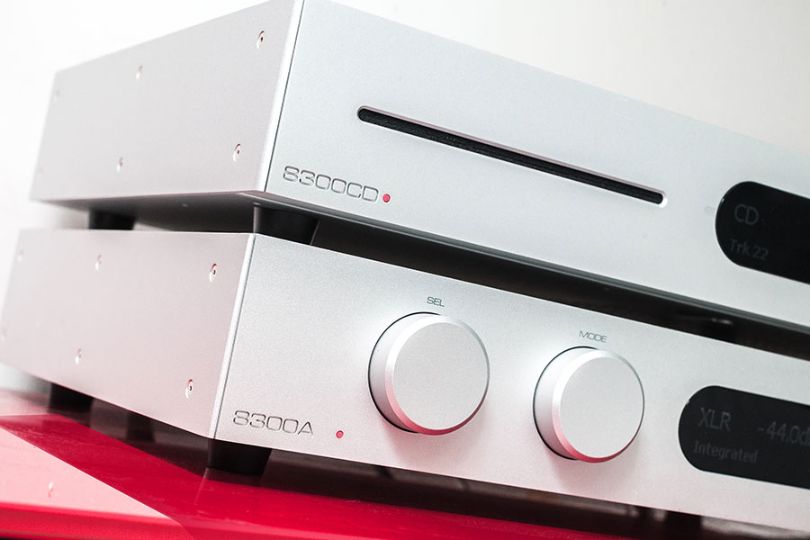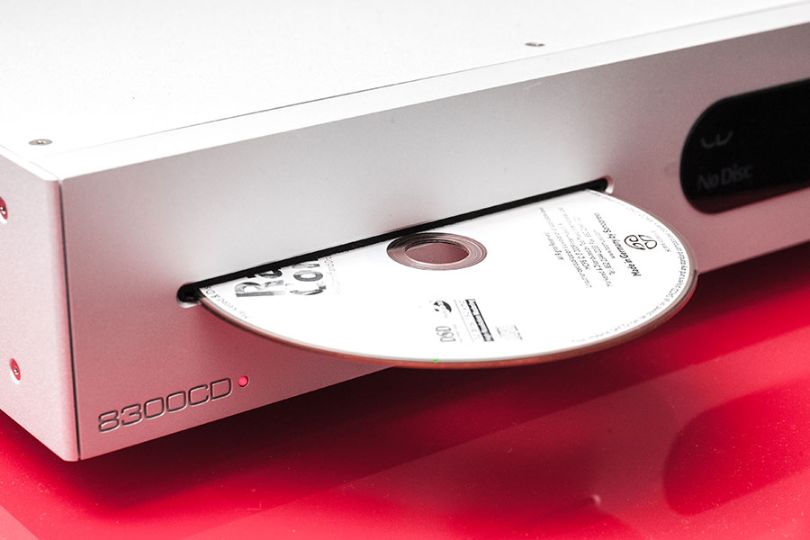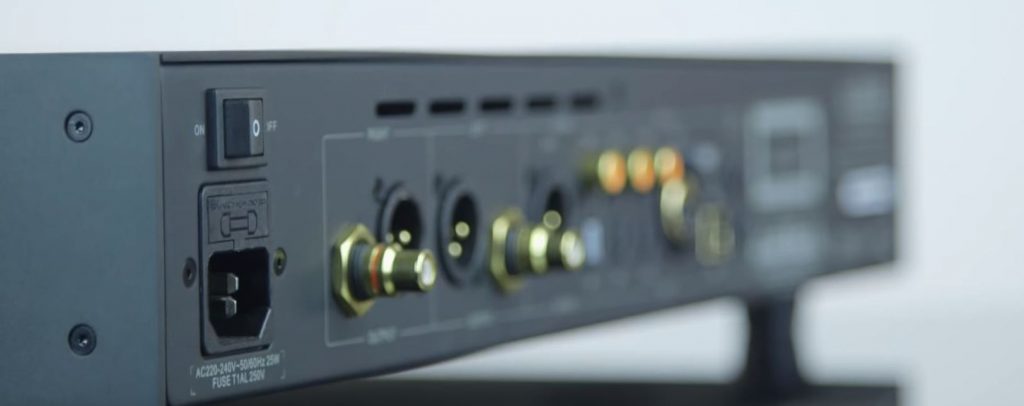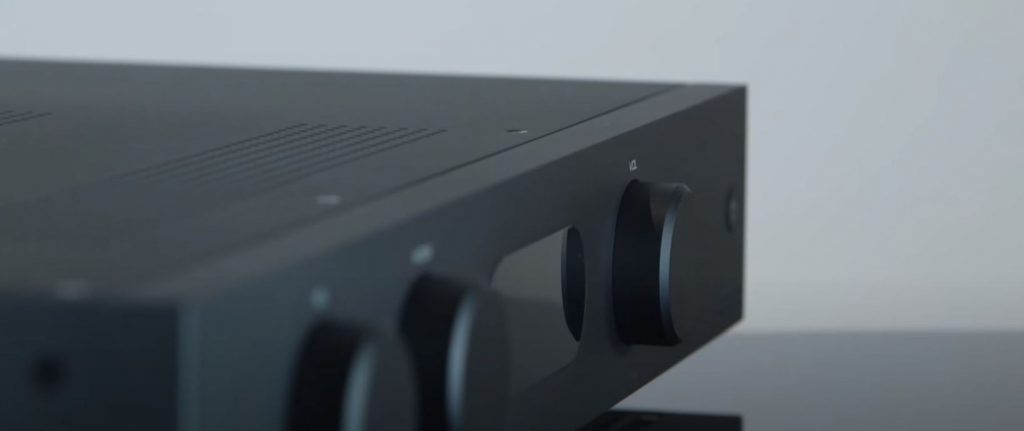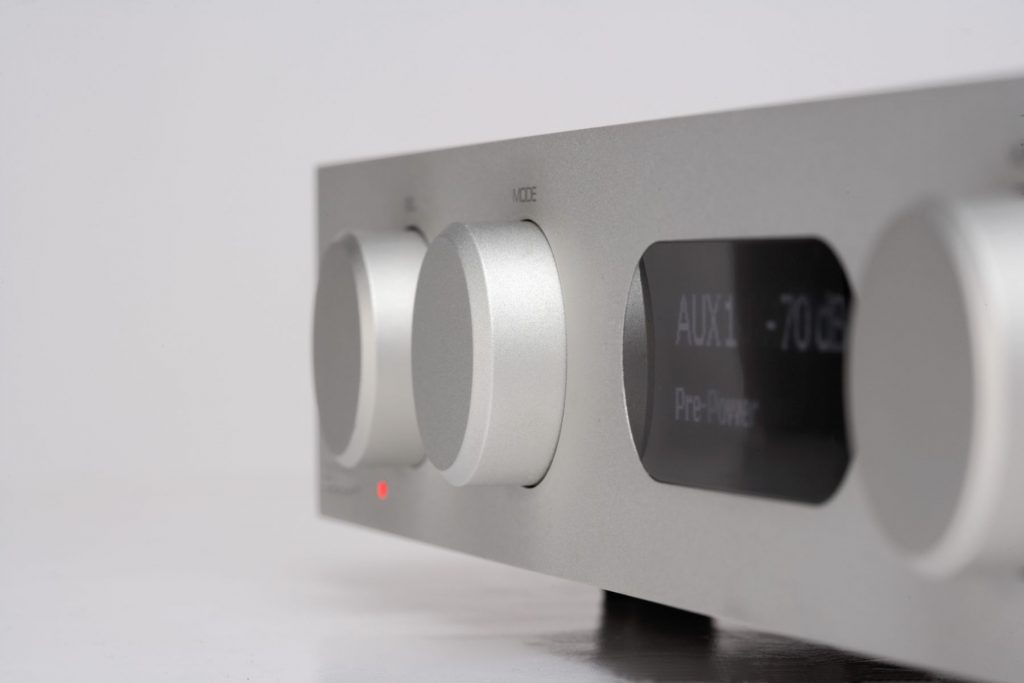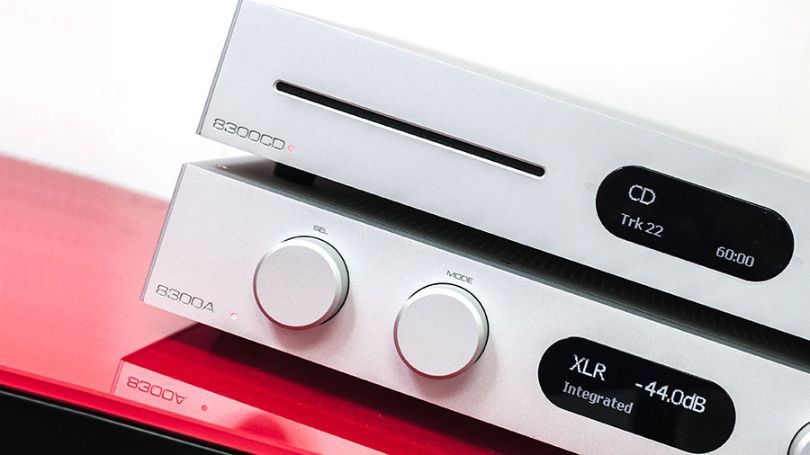Audiolab 8300A/8300CD Review
Audiolab, a British brand, has been a cost-effective choice since the 8000A integrated amplifier launched in the 1980s. The 8300CD CD player and 8300A integrated amplifier introduced this time have enhanced functions, and the circuit has been redesigned. So how can this new “combination” perform somewhat?
Audiolab 8300CD: CD and decoding combo
One of the highlights of the Audiolab 8300 series is the 8300CD. Although there are more diversified ways of playing digital music, music downloaded and played over the Internet is getting more accessible and more abundant. However, the CD is still the most crucial medium for listening to music for many music lovers. For a music player with many CD collections, the CD player is still an indispensable part of the audio system.
Audiolab understands the needs of music lovers and also grasps the development direction of listening trends. The Audiolab 8300CD is a CD player and a USB DAC. It even has a built-in digital audio control so that you can use it as a digital preamp. The center of the Audiolab 8300CD’s front panel is a 2.7-inch oval OLED window. The visual shape is quite the same as that of the 8300A. The right side of the display window is the control button, and the left side is the CD insertion entrance.
The DAC chip of 8300CD uses ESS Sabre32 9018. However, the performance of the USB DAC part is greatly improved, and it can support up to 32bit/384kHz and can accept DSD files. In the era when the 8200CD was just released, high-resolution music was not popular.
However, there are more and more websites that pay to download high-resolution music files. Although the number of items is far less than that of CDs, online downloading and paid listening will gradually become a trend. Audiophiles Will choose high-quality products.
In addition to chip selection, the digital-to-analog conversion also requires an intelligent circuit design to match it to have a good sound. In DAC circuit design, how to deal with the “time” problem always requires engineers to think about it.
Audiolab uses the technology they have developed over the years in the 8300CD. In addition to using a high-quality clock processor, in conjunction with the DAC chip, it effectively reduces the digital noise caused by time base errors (jitter).
Audiolab also found that in addition to the digital noise generated by jitter that will degrade the sound quality, other analog RF noise and power interference will also affect the performance of the DAC. For this reason, they designed a “Cascaded Asynchronous Time Domain Attenuator” (“CATDA”) circuit. The circuit design is based on three identical noise reduction circuits connected in series, like water purifiers, Filtered layer by layer, which can effectively attenuate and isolate noise.
It is not an exaggeration to treat the Audiolab 8300CD as a digital processing center. In addition to USB (B-type) also has two sets of coaxial and optical inputs, and even AES/EBU is also attached to you. Therefore, if you have other digital sources that need decoded, they can be processed by 8300CD.
In terms of output, it provides a set of RCA, a group of XLR analog outputs, and even a digital output. It also offers coaxial, optical, and XLR terminals. In other words, if you upgrade the DAC someday, you can regard the 8300CD as a Digital turntable.
8300A: Power and performance are further enhanced
From the appearance point of view, the 8300A continues to maintain a low-key, simple design. It was changed to three central knobs, with a large display. On the front panel, only the words SEL, MODE, and VOL are left above the three knobs to identify the functions of the knobs. As a result, the entire front panel feels more concise.
In the center of the front panel is a display screen responsible for displaying the current operating status. This 2.7-inch OLED display is not much larger than the screen of the surround amplifier. That is not common in the two-channel integrated amplifier market, which can improve interaction with users. The user can grasp the current operating status of the 8300A through the screen.
Take a closer look at the quality of the 8300A. The cutting and digging of the aluminum alloy sheet are of standard. The thickness of the sheet is also satisfactory. Just the amount of lifting the upper cover and holding it in your hand is enough to make people feel Audiolab’s sincerity in production.
Although it is not cut and excavated with aluminum blocks and integrated into one piece, the overall chassis is firm and thick, with many details to enhance stability.
Although I said that Audiolab 8300A is a little closer to a simple aesthetic design, it is not simple in terms of its functions. Audiolab had removed their phono input on the 8000A ten years ago. Of course, Audiolab thought that vinyl records were no longer mainstream in the market, and the omission of phono would make the circuit more streamlined.
Now it’s different. In the past few years, the vinyl renaissance. Audiolab’s phono line on the old 8000A is still a classic that senior players still praise. This time it rebuilds the 8300A and puts the phono line in. And at the same time, MM/MC is magnified for you, and the switch is operated by the knob on the front panel or directly selected through the remote control.
Audiolab 8300A has a lot of connection terminals. There are phono terminals for vinyl turntables, but there are six high-level analog inputs, one balanced and five unbalanced. In addition, there is 1 set of rear stage input, which can be connected to the front stage output of the surround amplifier and integrated into the overall audio-visual system.
There are also two sets of front stage output, easy to upgrade the front and rear stage separation system or subwoofer. Two sets of speaker outputs Terminals make Bi-Wire easier. In addition, the 12V trigger input/output terminal can be connected to the 8300CD.
The 8300A with 75 watts per channel has 15 watts of thrust more than the 8000A and 8200A with only 60 watts. In addition, the output power is increased by 25%, making the 8300A more comfortable when driving the speakers. The power amplifier part adopts a dual mono design.
To maximize the benefits of Dual Mono, the Audiolab 8300A adapts an independent power supply for the left and right channels, each with its rectification and filtering circuits, and each channel has a 15,000μF capacitor. Although not impressive, it is more than enough.
In addition, several specifications are also more advanced than previous models. Including wider frequency response (1Hz-100kHz/±3dB), lower distortion value (total harmonic distortion <0.002%), and cleaner sound (signal-to-noise ratio>107dB); these are all due to the new 8300A Line design.
Audiolab 8300A also has a specially designed circuit called Active Current Delivery. Audiolab said that there is a microprocessor in the Audiolab 8300A. This IC allows the amplifier to maintain the lowest distortion even at the high current output, even at full power output.
At the same time, a protection circuit is also designed, and a limit point is set at the 15A output. Once the output is greater than 15A, the output will stop to protect your speakers from being burned out.
Sound Performance
The Audiolab 8300A/8300 CD combination is biased towards the warm sound, full of mid and low frequencies, but it does not affect the analysis power at all. The vocal reproduction is excellent, oily, and very textured, showing the three-dimensional magnetic sound line pole of the human voice, and the image is clear, and the positioning is accurate.
The big scene ensemble’s control of playing orchestral music is also very good, and the significant dynamic position is unambiguous.
The potential is strong at low frequencies, but the extension will be slightly less, but the sound is almost transparent and comfortable, and there is no feeling of muffled sound at all. It does not affect the analytical power, and the overall rich musical sense is delightful.
The Audiolab 8300CD has a variety of built-in digital filters, including Optimal Transient XD, DD, Sharp Rolloff, Slow Rooloff, etc., which have a significant effect on changing the sound floor. Although my favorite is still the default Optimal Transient XD, other effects are worthwhile. Give it a try.
I connected RCA and XLR, respectively, to try out the effect. The contrast is quite apparent. When the XLR balance is connected, the human voice is more three-dimensional and prominent, the image is clearer, and the analytical power is better. In addition to the quieter background, the separation and positioning of the soundtrack and vocals are also better.
In addition, the low frequency will be more prominent when connecting with RCA this time, and the sense of volume will be more. However, it still maintains good flexibility and analytical power. Therefore, if you use a combination of 8300CD and 8300A, I believe that the XLR connection will be a better choice.
Conclusion
The combination of Audiolab 8300A integrated amplifier and Audio lab 8300CD player allows people to enjoy music easily and diversely. Rich connections, you can connect multiple and multiple sources. Moreover, the driving performance of the amplifier has good and differentiated performance under the combination of various sets of speakers.
At this price, you can buy a CD player, a high-spec USB DAC, a CD player with digital front-end function, a 75W integrated amplifier that can also separate the front and rear stages, and MM/MC cartridge amplification. Audiolab takes all of this. Give you all. If you are a pragmatist, Audiolab 8300A/8300CD is definitely a combination worth considering.
